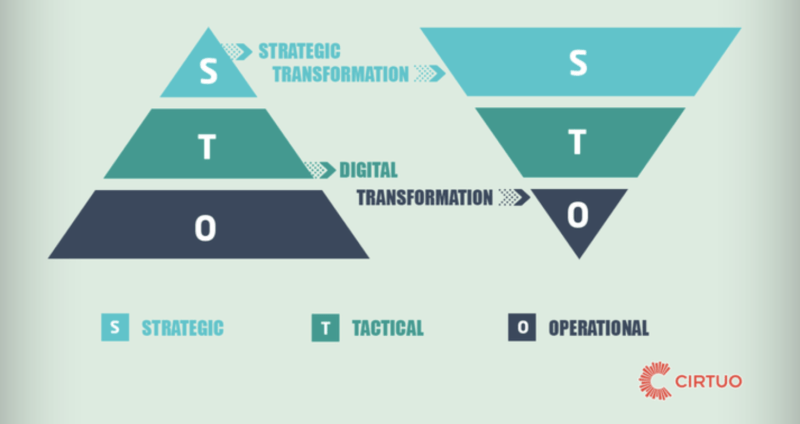Category strategies help Procurement align business requirements with market realities to leverage market opportunities, mitigate risks, and increase supply chain resilience. The methodical approach for building category strategies aims to help companies assess and plan how to best acquire goods or services for their business under given market realities. We have explored the ‘internal analysis as foundation for holistic category strategies’ in our recent blog, stating that the process of managing a category strategically is perpetual. Just like internal requirements and objectives change, so do the factors defining the supply market. Category strategies provide a comprehensive framework for assessing and monitoring the external market.
A holistic view on challenges & opportunities in the supply market
Pandemics, natural disasters, war, inflation, continuously high interest rates, soaring prices, political instability, and talent shortages – just a selection of drivers that influence the markets we operate in. The second step in Cirtuo’s strategy creation process is the external analysis phase. We refer to it as ‘challenges & opportunities’ in guided category strategy creation as it more appropriately reflects the importance of factors outside of our control in the strategy development process.
The external analysis helps Procurement to understand the underlying drivers of the market it is engaging in through a structured analysis of the products & services it buys, market & competitive drivers, our own role in the market, and the risks that lurk at every step of the supply chain. It adds a holistic perspective on the market to the inward-looking analysis of business requirements.
10 tools for performing a holistic external analysis
Performing an external analysis can be a daunting task due to the broad perspective necessary and the complexity of strategic tools needed for gaining a complete picture. A structured framework ensures all angles are covered and all questions get asked. The key steps involved in performing the external analysis include:
1. Kraljic Matrix – The Kraljic matrix is probably the single most referenced framework in category management. The category is positioned on a 2-by-2 matrix with business impact and supply market complexity as its axis. The position on the matrix correlates with the category’s relative impact on the business and the reliance on the supply market.
2. Porter’s Five Forces – Porter’s Five Forces is the framework for analyzing the competitive forces within a market. Looking through the perspective of a category, it helps us understand the relative power in the market over the supply chain by understanding the influence of our own company, suppliers, buyers, new entrants, and substitute products. Understanding these five market forces allows us to understand market dynamics and derive appropriate responses.
3. SWOT analysis – Another classic, the SWOT analysis helps us understand our Strengths, Weaknesses, Opportunities, and Threats regarding a specific category. Strengths and Weaknesses are focused on internal factors, whereas opportunities and threats are focused on the market. By understanding these factors, we can identify actions for leveraging our strengths and reducing our weaknesses. It also helps us see factors that may positively or negatively impact the supply market for the category.
4. Product/service breakdown – Breaking a product or service into its individual components with their respective requirements and specifications helps to gain a more granular understanding of the required supply chain behind it. This is especially helpful for formulated products or finished goods, as it brings transparency to the challenges and opportunities associated with its components.
5. Cost analysis – Cost analysis is about understanding the cost structure, the cost drivers, and the Total Cost of Ownership. To gain a full understanding of the lifetime costs of a good or service, an analysis of the cost breakdown, the process costs, and the underlying cost drivers is required. By collecting relevant data points like raw material prices, indices, foreign exchange rates, or historic price data, valuable insights can be gained on price trends, which might help with forecasts and, potentially, identifying negotiation levers.
6. Market analysis – The market analysis should provide an overview of the market we are engaging in, including the overall market size, nature of the supply market, regulatory environment, technological trends & innovations, geographical differences, etc. It is the frame of reference, the playing field, in which we need to operate and should therefore be well understood.
7. Environment, Social, Governance (ESG) – As the regulatory framework companies operate in is changing, ESG and Corporate Social Responsibility (CSR) initiatives have become very important for managing categories successfully. Especially sustainability & diversity can be influenced by Procurement. By analyzing sustainability and diversity requirements, organizations can consider them in their category strategy to support sustainable development, reduce environmental impact, foster social responsibility, and promote inclusivity within the supply chain.
8. Risk analysis – Performing a thorough analysis of internal & external risks that have the potential to impact a companies’ business is key for ensuring organizational resilience. It is therefore important to identify all available risks and evaluate their potential impact on the business and the probability of their occurrence. Visualizing the risks in a matrix brings transparency to the risk profile of the category. For each risk, a risk mitigation plan should be developed.
9. Supplier profiles – Understanding the market requires understanding its players. Supplier profiles for incumbent suppliers and other important players in the market ensure we are up to date on developments and changes in the market. The profiles should contain information on capabilities, products, services, performance, and relevant public information. The nature of the supplier landscape is a key factor for evaluating potential value levers.
10. Supplier preferencing – Supplier preferencing is a framework for understanding and managing supplier relationships. Understanding our importance to incumbent or potential suppliers helps us understand our relative power in the relationship. Adapting the Kraljic Matrix, supplier preferencing uses a 2-by-2 matrix to assess the attractiveness of the buying organization to the supplier and the value or business impact it has for them. This insight can be leveraged for negotiations or help mitigate risks.
The external analysis provides Procurement with a holistic perspective on the market a company is engaging in – its rules, its players, and its drivers. It adds a holistic perspective on the market to the inward-looking analysis of business requirements. Looking at both elements together enables Procurement to develop actionable value levers in the ‘strategizing phase’ that are both relevant to the business and feasible in the market. A thorough review of the supply market is therefore a critical step in the development of holistic strategies. Failing to understand the market you operate in may simply render your strategy ‘not actionable’.
While the external analysis can be performed based on internal knowledge and desk research, it becomes much more powerful when integrated with external Market Intelligence and data feeds. Especially for ensuring that strategies stay up to date and for identifying external events with an impact on the strategic direction of the category, automated MI and data feeds are crucial. We cover the opportunities of external 3rd party Market Intelligence & (supplier) data in a separate blog.
Cirtuo Guided Strategy Creation: helping Procurement navigate complex markets
Cirtuo is on a mission to make category strategies actionable by helping category managers navigate the complexity of the supply market. By guiding users with an interview-style process through our ‘strategy highway’, Guided Strategy Creation™ Pro ensures all category managers review the external market from all angles and answer the most important questions for understanding the buying power in the market. Category managers can centrally capture information on the product/service & process, the market & cost drivers, the supplier landscape, and product & supply chain risks to develop a comprehensive understanding of the complex environment surrounding a category.
The information from the external analysis is instrumental in the following ‘strategizing phase’ of developing holistic category strategies. Cirtuo offers AI-powered recommendations on value levers that align the captured business requirements and market realities. This enables Procurement to identify actionable initiatives in line with business strategies and possible to execute. This combination is what makes compliance easy for stakeholders and therefore results in increased spend under strategy.
Making holistic decisions in complex environments
Helping Procurement to navigate complex business environments is a key objective for Cirtuo. We believe that a sound understanding of the external market is key for creating and protecting business value. That is why we are using our unique interview-style user guidance to simplify the data capturing and to navigate strategic analysis tools. With Cirtuo, every category manager can perform a holistic external analysis that highlights the challenges & opportunities of a category.
Learn more about making holistic decisions in complex environments in our deep dive blog on turning insights into actionable value levers.
Join the conversation on Linkedin.





